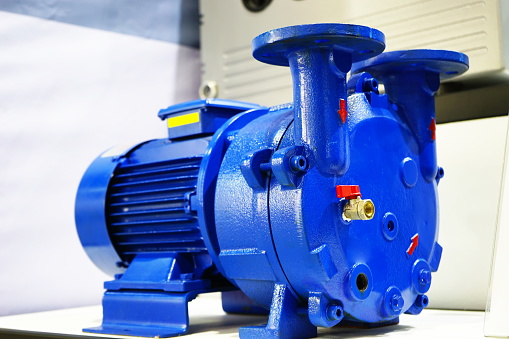With the industrial revolution, our everyday things are made in the industries. All have been produced somewhere in the sectors using different machinery from our food to clothing to electronic media. These types of machinery include a wide variety of the kinds of machinery which help us get our daily needs.
Industrial vacuum motors and servo motors are one of them. They act as a fundamental part of any industry and help produce different products. There are many different types of industrial vacuum technology. The main function of them is packaging and drying of products. It is also involved in moving things from one place to another. Servo motors are electronic devices having rotary or linear actuators that precisely rotate and push elements of a machine.
Industrial vacuum motors and servo motor working
Industrial vacuum pumps were once notorious for their loud operation, enormous amounts of oil carryover, and high energy costs. But it is no longer valid as Recent advancements in vacuum pump developments have led to improvements in the machines’ energy consumption, dependability, excessive noise, and overall performance. Industrial vacuum motors have various uses in industry. There is air in the vacuum chambers that should be removed. Vacuum pumps help to remove that air and provide an efficient working environment. Removing more molecules gets progressively difficult as the pressure in the room is lowered. It can work in the pressure ranges of 1 to 10-6 Torr. Vacuum pumps can have high, very high, and ultra-high vacuum pressure ranges. To get these different pressure ranges require different types of pumps, split into Primary Pumps, Booster Pumps, and Secondary Pumps. Vacuum pumps are divided into two groups: Entrapment or capture pumps and gas transfer pumps. Industrial vacuum motors age is almost 15 to 20 years. Industrial vacuum motor replacement almost costs $100 – $300.
Servo motors are used in our home devices, automobiles, industrially, and the military. Servos are well-known for being frequent and consistent. If the motor is under a heavy load, the driver will boost the current to the motor coil while the motor turns. This essentially means that servo motors must always be mechanically correct. It also allows organizations to use it at high speed due to its precision. Servo motors can be AC or DC. Types of servo motors include brushed and brushless, synchronous and asynchronous. The signs of servo motor breakage are overheating, burning, and gear failure. Servo motor repair costs $158 to $185. Servo motor repair includes the following steps:
- Unmounting the previous servo motor
- Unraveling the brake cable from the servo motor
- Retightening it
It is essential to replace and repair machinery; otherwise, it will end beyond repair, and it will cost more than what it would have cost earlier.
Pneumatic Vacuum Generator
A pneumatic vacuum generator, sometimes known as a ejector or pump, creates vacuum through the expansion of compressed air. They are commonly used in material handling applications that require higher levels of suction and in automated assembly.
Several design options are available, including those that use the Venturi principle or an elliptical venturi nozzle. They typically produce a low level of pressure (less than 50 psig) and can be fitted with a valve to control suction flow.
Multi-stage units generate stronger suction through a series of ejectors and nozzles. These systems are quieter, can develop vacuum at lower pressures and reduce compressor air consumption.
Summary
Industries have become an essential part of our daily life. Different kinds of machinery used in industries are to provide us finest products. These types of machinery include industrial vacuum motors, which ensure proper packaging, while servo motors help move machinery from one place to another.

